As frequent fliers around the world have been under some sort of isolation or quarantine order as restricted in their jurisdiction by a government entity — or, perhaps, did so voluntarily — instead of traveling due to the current 2019 Novel Coronavirus pandemic, they have become far more acquainted with the surroundings inside of their homes…
House Plants: A Map of the Urban Jungle
…and those surroundings may include houseplants, which have been taking over the interiors of the world — and they are taking over Instagram as well.
Our little green — and pink and yellow and red — friends are perfect companions for urban life in the 21st century. A potted plant is good company, something to look after — an exotic pet that will not incur the wrath of your landlord — and plants are good for your mental health, which is certainly helpful if you have to spend a lot of time stuck indoors at the moment.
Indoor plants and flowers are ripe for photographing, too. Vivid color, shape, and texture abound — all from natural materials! — and rhizomatic plant patterns are the perfect antidote to the sameness of urban spaces. Every houseplant is unique — so the potential for Instagram posts is infinite.
This article from Budget Direct highlights who and where are the #urbanjungle influencers — as well as how does their indoor garden grow. Using data which was “scraped” from Instagram, a map of the world regions that use the #urbanjungle hashtag the most was created — then the most tagged houseplant varieties to find out what everyone is growing at home was searched.
I have been given express written permission to use the illustrations and the verbatim text from the aforementioned article in this article; so let us take a break from the news of the day and plant a little fun in our lives.
A Map of the #UrbanJungle
Europe is the indoor garden of the world. We found nearly 17,000 posts with the #urbanjungle tag whose location data placed them in Europe, next to 9,402 for North America. Germany, the UK, and France are the top three countries in Europe for houseplant selfies. However, the United States is the leading country in the world, with nearly twice the number of pictures shared in second-place Brazil.
Three cities lay claim to being the capital of urban jungles: NYC, London, and Berlin were the only places with more than 1,000 posts each. Are these the hippest places in the world, the most aesthetically discerning, or are their citizens just trying to escape the smog?
Kings of the #UrbanJungle
They’re the jungle VIPs: the top 10 influencers on houseplant Instagram. We checked out which Instagram accounts were responsible for the most popular posts for a range of gardening tags, including #houseplants, #houseplantsofinstagram, #houseplantsmakemehappy, and — of course — #urbanjungle. We didn’t include plant shops and businesses or re-posting accounts like @houseofplantlovers.
Here are the top 10 houseplant influencers on Instagram:
- @houseplantjournal (Darryl Cheng, Canada)
- @thepottedjungle (The Potted Jungle, USA)
- @hiltoncarter (Hilton Carter, USA)
- @jamiesjungle (Jamie Song, UK)
- @dabito (Dabito, USA)
- @idrinkandigrowthings (Eunice Hernandez, USA)
- @meeschmid_plantlady (Mee Schmid, Switzerland)
- @homesteadbrooklyn (Summer Rayne, USA)
- @jenssuccs (Jen Tao, USA)
- @plantsandcollecting (Seija Margareta, Finland)
The number one urban jungle influencer is Darryl Cheng. Cheng has amassed over 430,000 followers with his friendly, accessible tone, and helpful answers to his followers’ questions. The runner-up is @thepottedjungle, a “San Diego plantaholic with a love for all things green.” According to our study, if you want to become an #urbanjungle influencer, you need a blend of houseplant knowledge, interior design flair, and friendliness. And don’t forget to water yourself daily.
The Top Houseplants Instagram
Next, we identified the plants most commonly photographed by Instagram’s greenery experts. How did we decide who is an expert? We searched only for hashtags that included each plant’s botanical name (rather than its common name). Here are the top three in the categories of foliage, flowering, and cacti/succulent plants.
Cacti and Succulents of Instagram
Succulents, including the popular subcategory of cacti (any succulent with areoles), are popular houseplants because they are reputedly hard to kill. But to understand succulents, you must first understand the desert! If you make the common mistake of watering your cactus every day or positioning it in a gloomy area of the room, you’ll never have a plant worthy of Instagram.
Echeveria
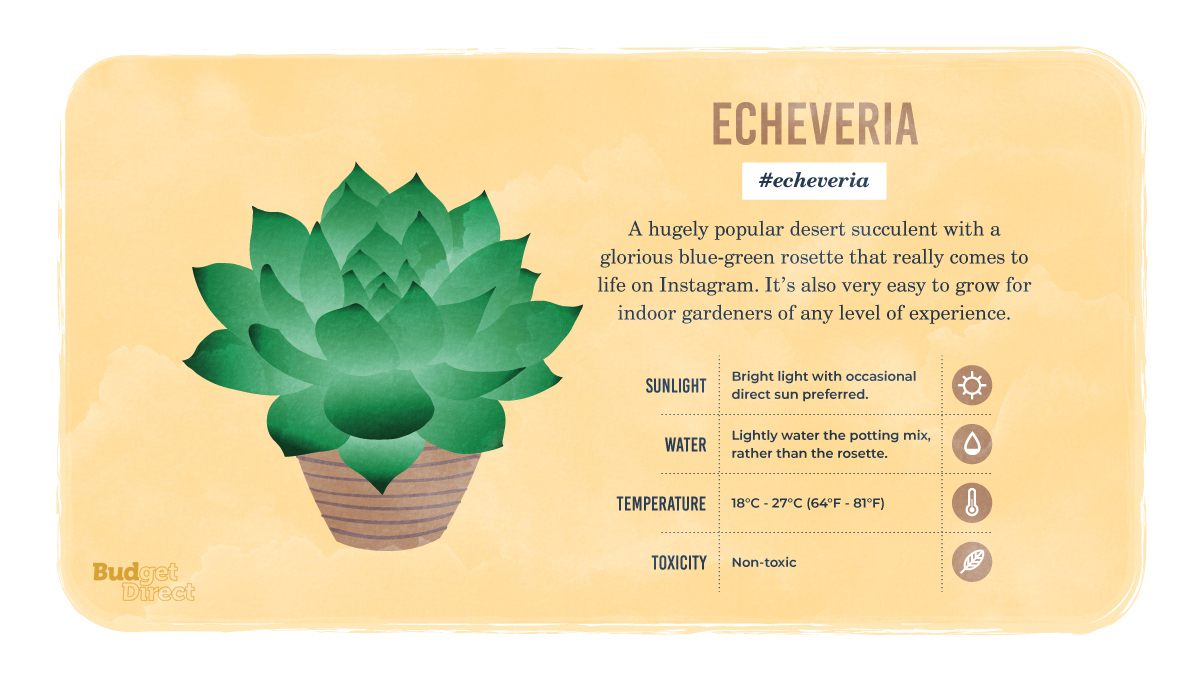
Euphoric #echeveria is the number one houseplant on Instagram, with over a million pictures. It’s not hard to see why: the perennial’s plush leaves radiate in rows from the centre, forming the kind geometric patterns the Instagram format loves. You can find over 1,000 varieties of this cactus in all sorts of colours and a variety of shapes and textures. Your echeveria is as personal to you as your fingerprint.
Haworthia
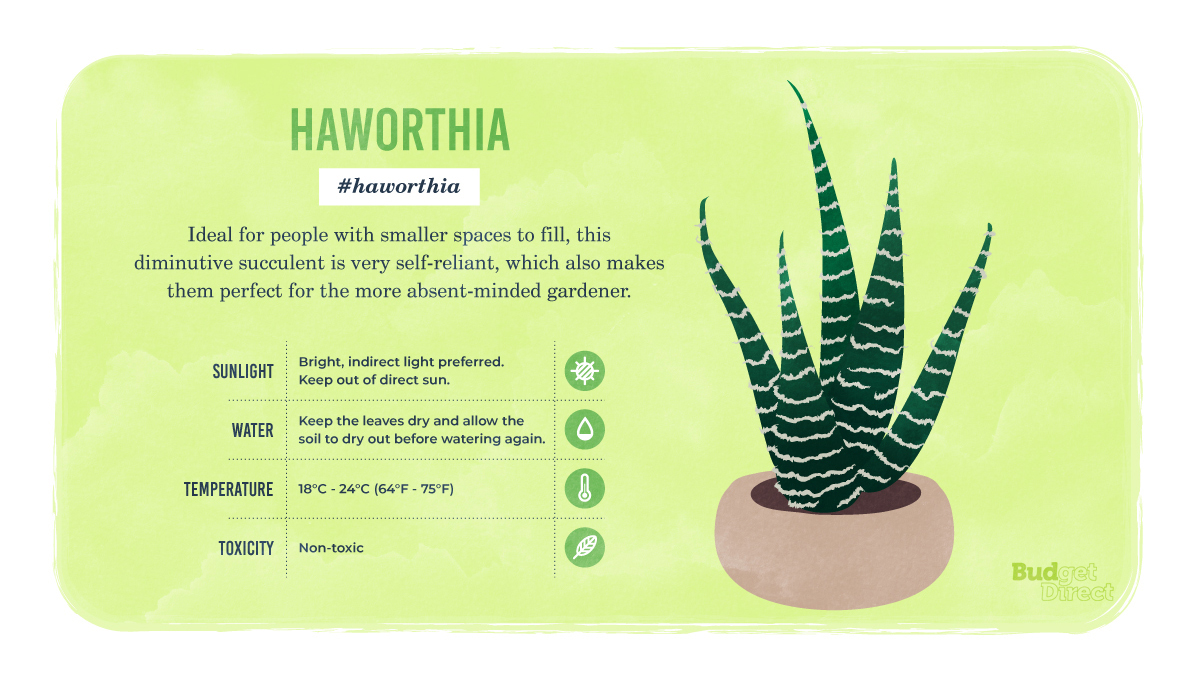
The humble #haworthia is a tiny succulent you can grow in a teacup and the third most popular plant on Instagram. It doesn’t ask for too much water and is happy to be away from direct sunlight, as long as you keep it in a bright room. Some Haworthias have bobbly white warts, some have tufty edges, and the zebra cactus variety is just as stripy as the name suggests.
Living Stones
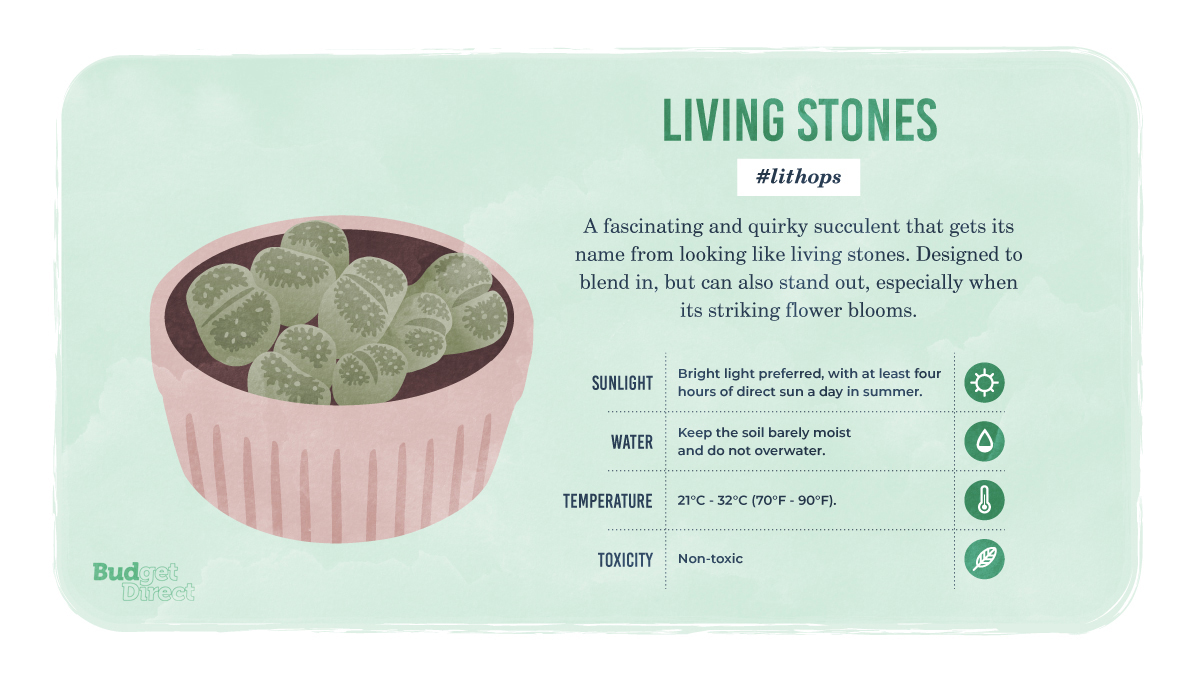
“On picking up from the stony ground, what was supposed a curiously shaped pebble, it proved to be a plant,” wrote William Burchell on his ‘discovery’ of lazy old #lithops — the succulent that just wants to blend in with the landscape. Looking like a stone is a great advantage for a plant that hopes not to get eaten by grazing animals. They are the eighth most popular plant on Instagram.
Flowering Houseplants of Instagram
The real crowd-pleasers of houseplant Instagram are the flirts and fancy things: flowering plants that bluster with colour, shapes, and tantalizing texture. Flowers can take a bit more care than other plants, but the payoff is that every snapshot looks like an explosion of paint and fabric.
Crocus
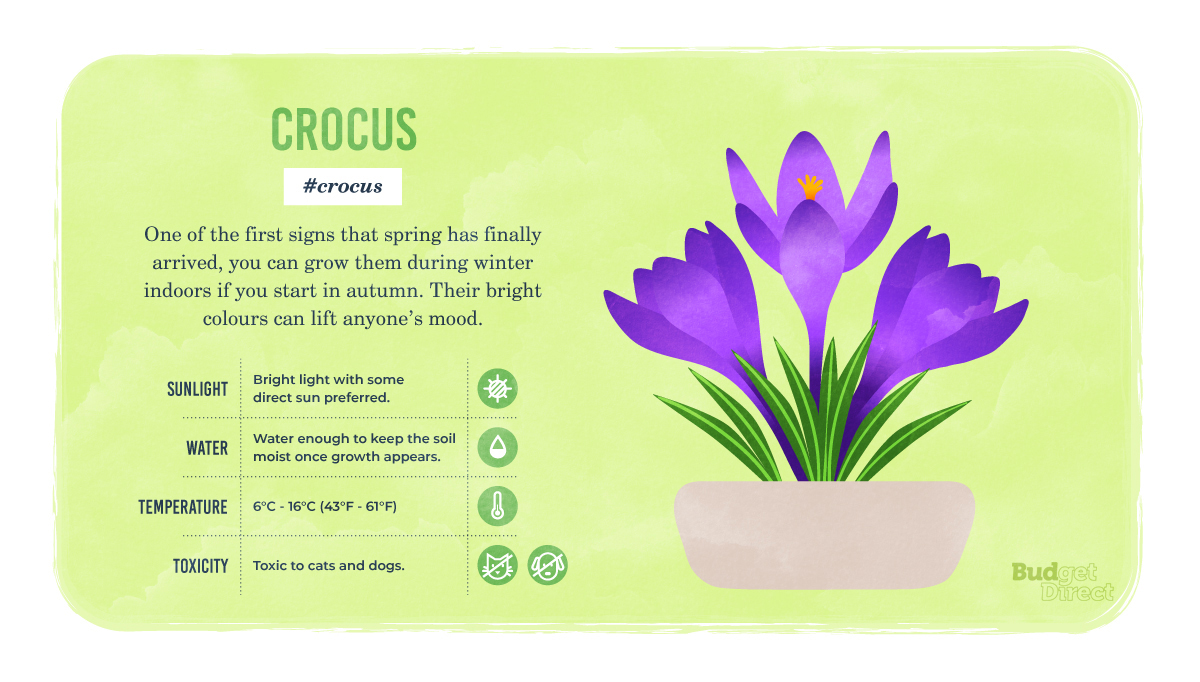
With over 500,000 tag uses, the cute #crocus is the second most photographed houseplant on Instagram. Crocuses bloom late winter-early spring, making them ideal for brightening gloomy days stuck indoors. Oscar Wilde considered an array of crocuses to resemble “a quivering moon of fire,” but you can let Lux and a snappy hashtag do the talking.
Fuchsia
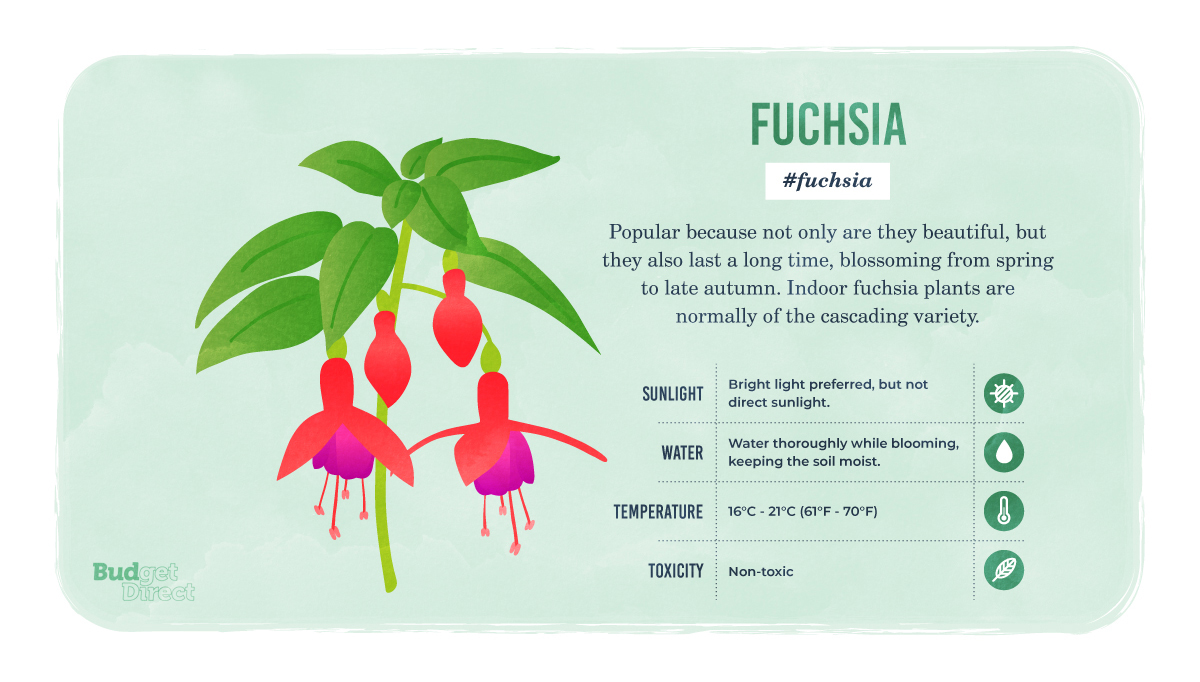
The French monk and botanist Charles Plumier named flamboyant #fuchsia after the German botanist Leonhard Fuchs, so we should probably pronounce it ‘fooksia’ rather than the common ‘fyusha.’ There are many varieties of fuchsia, which hails from Central and South America, New Zealand, and Tahiti. They are the fourth most popular plant on Instagram. Have you found the one that speaks to you?
Daffodils
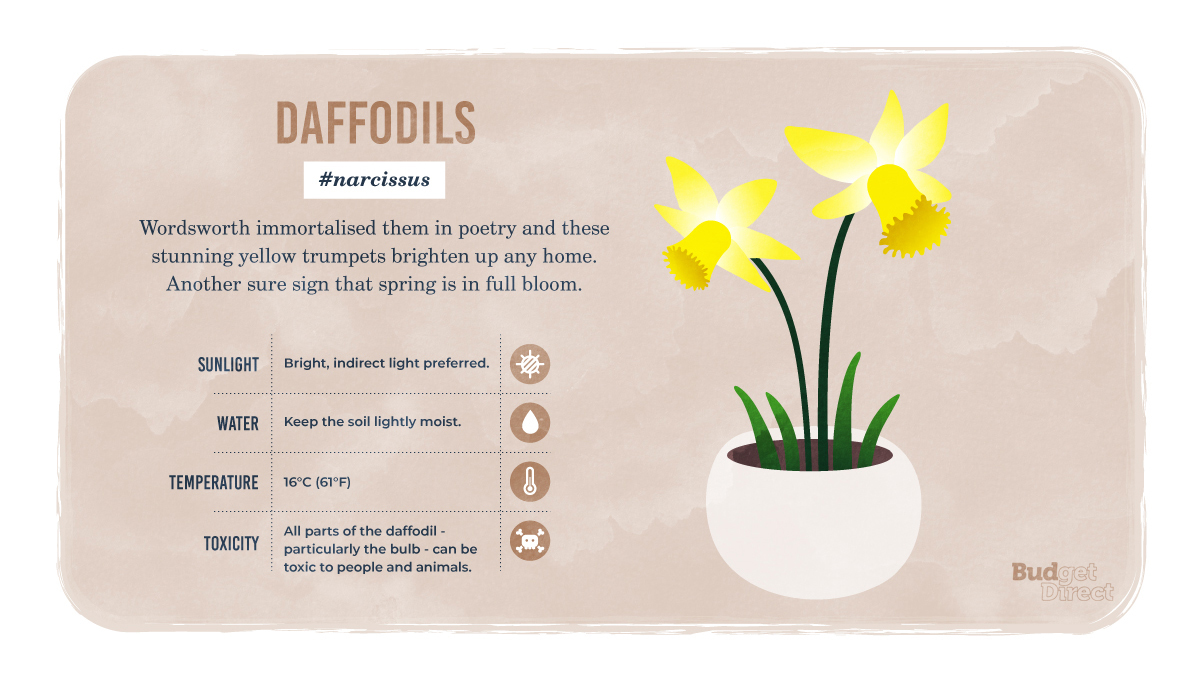
The dazzling daffodil goes under the botanical name of #narcissus because the flower seems to bend its head downwards like the mythological Narcissus tilting to admire his reflection in the water. Writers as diverse as Wordsworth and A. A. Milne have penned lines about the daffodil; such is its impact when it appears at the start of spring. The fifth most popular plant on Instagram and the perfect choice to inspire your re-launch as a stay-at-home writer-Instagrammer.
Foliage Houseplants of Instagram
Foliage plants are where the real jungle is at. These are the leafy little numbers, the boisterous green character actors of the houseplant set – what they lack in fruits and flowers they make up for with those lush, lush leaves.
Swiss Cheese Plant
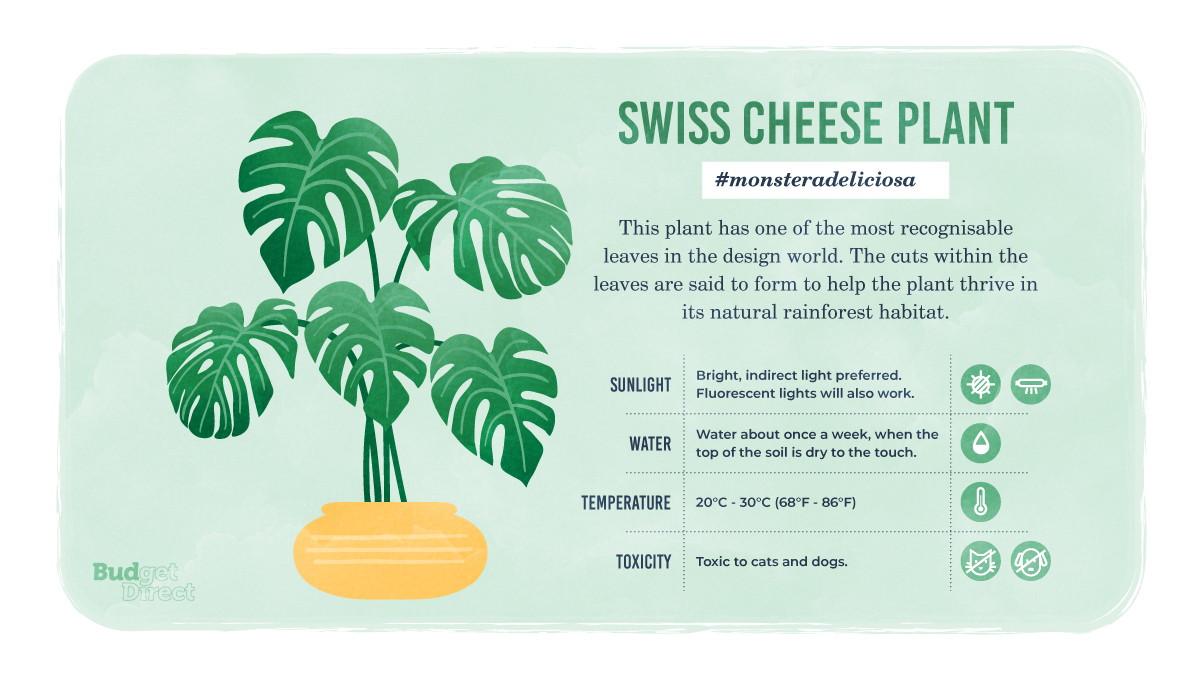
Mighty #monsteradeliciosa hails from Central and South America, where its roots are used to weave rope and baskets. Young Swiss Cheese Plants have round, full leaves, and they develop their characteristic slits and holes with age. The ‘deliciosa’ part of Monstera deliciosa refers to the scaly fruit, which is sweet like pineapple and banana. An iconic plant and a tasty snack in one, they are the sixth most popular plant on Instagram.
Chinese Money Plant
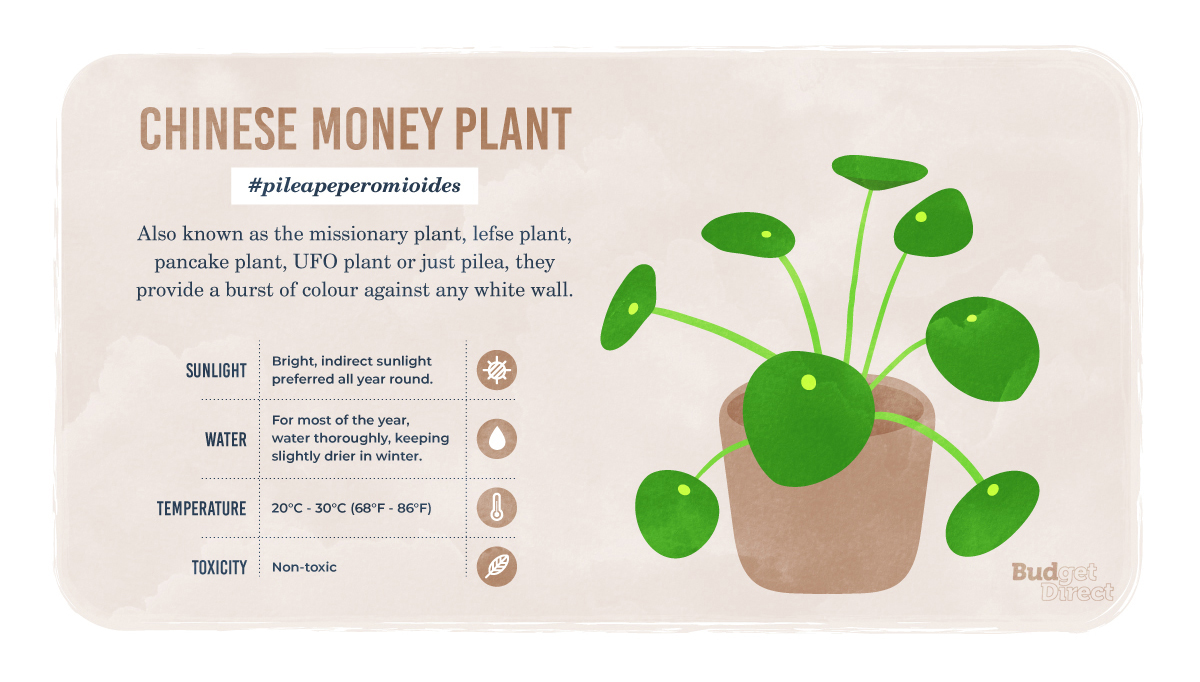
Playful #pileapeperomioides, the tenth most popular plant on Instagram, is said to have been brought to Europe from China by a Norwegian missionary in the 1940s (it’s also known as the ‘missionary plant’). He passed cuttings to family members, who passed cuttings to neighbours, who passed cuttings to friends, and here we are. Pilea Peperomioides is hard to find in shops, so your best bet at getting one is likewise to nurture a cutting from a friend.
Rubber Plant
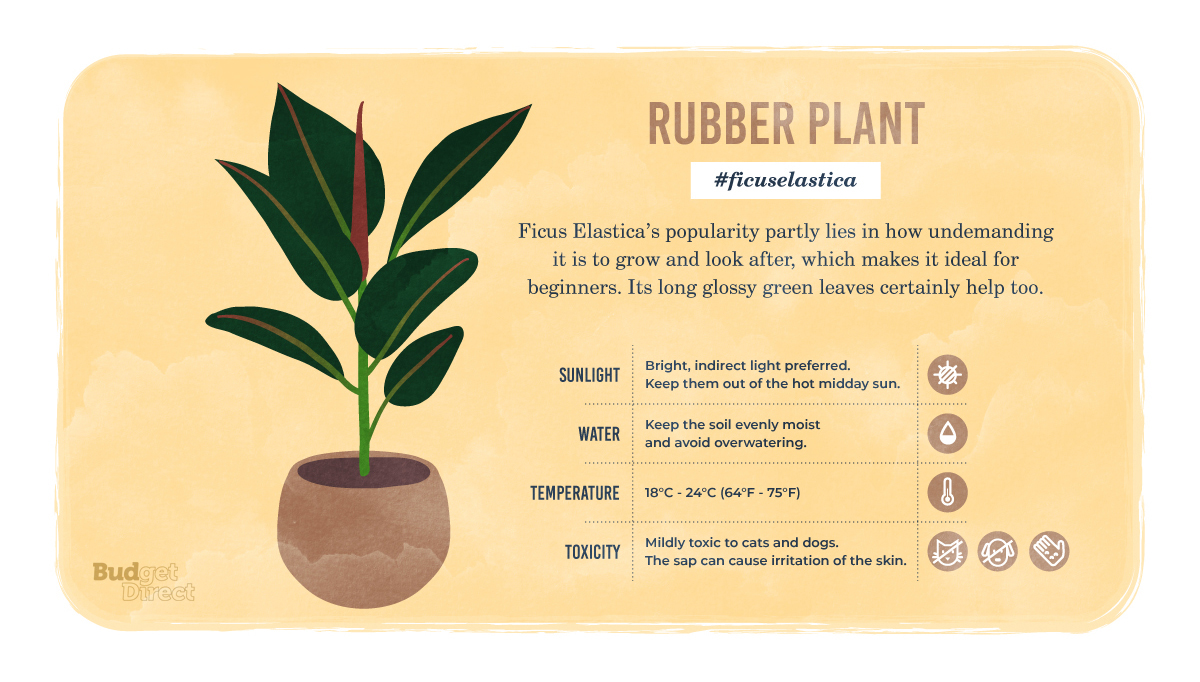
The eighteenth most popular plant on Instagram is the friendly #ficuselastica, a mainstay in offices and public buildings since before the 1970s. It helps that Ficus elastica thrives at room temperature and is relatively difficult to harm. Those big shiny leaves and the occasional shiny red ‘sheath’ in times of growth make the rubber plant a bold and reassuring presence, perfect for cultivating a creative atmosphere.
One reason for the ever-growing number of houseplants on Instagram is that once you start to collect them, it’s very difficult to stop. Nature always has strange new designs to appreciate, and potted plants make great company — always ready to listen to anything you have to say! Are your green fingers reaching for the camera?
Summary
Ever since I moved out on my own, I have had only live plants wherever I lived — none of that silk or plastic stuff for me, thank you very much.
When I am not traveling, I typically write articles for The Gate in my chair underneath a large ficus tree. It helps me get to the root of the issues about which I write in order to leave you with something to think about as you branch out to other tasks of your day…
Photograph ©2020 by Brian Cohen.

